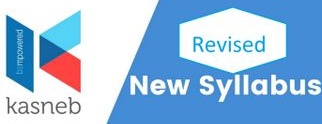CERTIFIED CREDIT PROFESSIONALS (CCP) SYLLABUS
FOUNDATION LEVEL
PAPER NO.1 CREDIT MANAGEMENT
UNIT DESCRIPTION
The paper is intended to introduce the candidate to the credit profession, equip the candidate with practical skills and knowledge required to manage the credit cycle for trade credit providers and financial institutions.
LEARNING OUTCOMES
A candidate who passes this paper should be able to:
- Assess and evaluate credit/lending proposals and advise credit applicants on various credit products
- Create, maintain and update debtors’ profiles and keep proper records in the credit function
- Implement credit guidelines and procedures for the complete credit cycle
- Monitor outstanding debts for conformity with the set-out terms and conditions
- Analyse credit extension various providers; banks, saccos, microfinance institutions, insurance companies and non-financial entities (locally and internationally)
CONTENT
- Introduction to credit management
1.1 History of credit Management
1.2 Definition of credit
1.3 The credit cycle
1.4 Why businesses extend credit
1.5 Types of credit;Consumer Credit, Trade Creditand Export Credit
1.6 Financial effects of credit on; Cost of credit, overdue on profitliquidity and Cash flow
1.7 Merits and Demerits of credit
1.8 The role of credit and its importance in the economy
- Consumer Credit
2.1 Players in consumer credit- Savings and Credit Cooperative Societies(SACCOs), Microfinance Institutions (MFI’s), Banks, Financial Technology (FinTechs)
2.2 Types and features of consumer credit agreements/products- Hire purchase, auto loans, personal loans, credit card,Personal lines of Credit (PLOCS), Overdraft limits
2.3 Classification and characteristics of consumer credit products
2.3.1 Classification the Tenure/Repayment mode
2.3.1.1 Revolving Credit
2.3.1.2 Installments
2.3.1.3 Open Credit
2.3.2 Classification Target Market
2.3.2.1 Consumer Credit
2.3.2.2 Corporate credit
2.3.2.3 Small and Medium enterprise loans
2.3.3 Types of Loans repayment mode and Security
2.3.3.1 Secured versus Unsecured
2.3.3.2 Amortisingversus Non-Amortising
2.3.3.3 Payment terms and methods
2.3.3.4 Consumer credit documentation
- Trade Credit
3.1 Players in trade credit
3.2 Types of credit products/accounts
3.3 Payments terms and methods used in trade credit
3.4 Trade credit documentations- invoices, credit notes, debit notes, statements etc.
- Export Credit
4.1 Terms and conditions of sale in export
4.2 Payment terms and methods
4.3 Challenges and risks associated with export credit
4.4 Export credit documentation
4.5 International Communication Terms (Incoterms)
4.6 Players in export trade- agents, distributors, del Credere
- The credit department
5.1 Roles of a credit department
5.2 Organisational structure of a credit department-financial and non-financial institution
5.3 Expected qualities of a good credit officer/manager
5.4 Duties/responsibilities/qualification of a credit officer/manager
5.5 Departmental relationships- Finance & Sales
- Fundamentals of Credit Assessment and Analysis
6.1 Types of borrowers
6.2 Introduction to credit analysis, appraisal and assessment
6.3 Sources of credit risk information for assessment
6.4 Introduction to credit risk and common business risks
6.5 Categories of customers in credit analysis and their credit risk factors
6.5.1 Sole proprietorship
6.5.2 Partnership
6.5.3 Private and public limited companies
6.5.4 Clubs, societies & Schools
6.5.5 Local bodies, statutory bodies and corporations
6.6 Techniques and models for risk assessment- 5C’s, CAMPARI, PARSER, CCPARTS
6.7 Role of financial statements as a tool for risk assessment
6.8 Factors to consider when assessing credit risks- financial and non-financial factors
6.9 Hedging tools against risks- bank guarantees, Securities and collaterals
- Introduction to Debt Collection
7.1 Introduction to collections- trade, consumer and export
7.2 Nature of credit customers/debtors
7.3 Qualities of an effective collection officer
7.4 Identifying Early warning signs
7.5 Application of Pareto rule (80/20) in collection.
7.6 Collections tools- telephone, letters, SMS, emails etc.
7.7 Collections techniques
7.8 Collection performance measurement and reporting
7.9 Provisioning norms and write-off of bad debts – IFRS9
- Information Sharing
8.1 Introduction to information sharing and industry players
8.2 Role of credit Reference Bureau (CRB)in information sharing
8.3 CRB reports and clearance certificate
8.4 Benefits of CRB to lenders and borrowers
8.5 Role of CRB in the economy
8.6 Accessing and interpretation of a credit report
- Information Technology and Credit management
Customer recruitment and risk assessment
Customer Masterfile
Billing and lending
Sales Ledger management and controls
Contents and role of a sales ledger
Types of sales ledgers
Automated Collection support
Online Lending platforms
Advantages & disadvantages of Fintech lending
- Credit Functions Outsourcing
10.1 Credit scoring and rating
10.2 Collection call centers and Debt Recovery Agencies
10.2.1 Credit Insurance
10.2.2 Features of credit insurance policies
10.2.3 Types of credit insurance policies
10.2.4 Benefits of credit insurance
10.3 Factoring and invoice discounting
10.3.1 Types of Factoring
10.3.2 Advantages and disadvantages of factoring & Invoice Discounting
10.3.3 Difference between invoice discounting and factoring
